Birch plywood is a versatile and high-quality wood product that has become a favorite among furniture makers, interior designers, and construction professionals. Known for its strength, fine grain, and attractive light color, birch plywood combines aesthetic appeal with reliable performance, making it ideal for a wide range of woodworking and building applications.
Whether you're planning a detailed cabinetry project, constructing sturdy subfloors, or designing sleek, modern furniture, understanding the properties and types of birch plywood can help you make the best material choices. In this guide, we’ll walk you through everything you need to know—from grades and sizes to usage tips and comparison with other plywood types.
Before diving into its practical applications, let’s take a closer look at what birch plywood is, where it comes from, and why it stands out in the world of engineered wood products.
Birch plywood is a type of hardwood plywood made by layering thin sheets (veneers) of birch wood, typically bonded with strong adhesive under heat and pressure. The result is a dense, durable, and stable panel that resists warping and splitting better than many softwood-based plywood types.
Unlike some composite boards, birch plywood features multiple layers of solid birch veneers, giving it superior strength and a clean, uniform appearance that makes it ideal for both structural and decorative use.
Birch plywood originated in the Baltic region—most notably in Russia and Finland—where birch trees are abundant. The term "Baltic Birch" is often used to describe high-quality plywood sourced from this area, which is renowned for its consistent veneer layering, tight grain, and minimal voids.
Historically, birch plywood gained popularity in European markets for cabinetry and aircraft construction, and has since become a global standard for precision woodworking, industrial design, and architectural use.
There are several compelling reasons why birch plywood is a go-to material across industries:
Strength and Stability: Thanks to its cross-banded veneer structure, birch plywood offers excellent resistance to bending and warping.
Attractive Finish: Its pale color and fine grain make it ideal for visible surfaces or high-end furniture.
Workability: It machines well, holds screws and glue effectively, and offers a smooth surface for painting or staining.
Consistency: Unlike many softwood plywoods, birch panels have fewer internal voids and a more uniform density throughout.
Birch plywood stands out in the world of engineered wood products due to its excellent performance characteristics and visual appeal. Below, we break down the key properties that make birch plywood a preferred choice for furniture making, interior design, and structural applications.
Strength and Durability
One of the most notable features of birch plywood is its exceptional strength. This comes from the cross-laminated construction of multiple birch veneers, which are bonded together with high-strength adhesives. The result is a dense, stable panel that resists:
Warping and bowing
Splitting and cracking
Heavy loads and pressure
Its superior mechanical strength makes birch plywood suitable for load-bearing applications, including flooring systems, shelving, and cabinetry.
Appearance and Grain
Birch plywood is also valued for its clean, uniform appearance. It features a smooth surface with a fine, even grain and a pale, creamy color that ranges from light yellow to white. The outer veneers are often free from knots, making them ideal for:
Visible furniture panels
Decorative cabinetry
Laser cutting and engraving
When finished with clear varnish or stain, birch plywood provides a warm, natural look that complements both modern and traditional design styles.
Workability and Machining
Birch plywood is known for its excellent workability. It cuts cleanly with power tools and holds screws, nails, and fasteners securely. Its consistent density and minimal voids make it ideal for:
Precision cutting and shaping
Routing and edge profiling
Glue bonding and joinery
This makes it a favorite among woodworkers, especially for projects requiring fine detail or tight tolerances.
Moisture Resistance
While birch plywood offers decent resistance to moisture, its level of water resistance depends on the grade and adhesive type used in manufacturing:
Interior-grade birch plywood is suitable for dry, indoor environments.
Exterior or marine-grade birch plywood (typically Baltic Birch) is manufactured with waterproof adhesives, making it more resistant to moisture and humidity.
For projects exposed to occasional dampness—like kitchen cabinetry or bathroom vanities—opt for higher-grade birch plywood with moisture-resistant glue lines.
Environmental Considerations
Birch plywood is often considered an eco-friendly choice, particularly when sourced from sustainable forests in regions like Finland and Russia. Many suppliers offer:
FSC-certified birch plywood (from responsibly managed forests)
Low-VOC and formaldehyde-free options (for healthier indoor air quality)
Additionally, its durability and long service life reduce the need for frequent replacement, minimizing waste over time.
Birch plywood comes in a range of types and grades, each tailored for different applications—from high-end furniture to general construction. Understanding the grading system and product variations is crucial when selecting the right panel for your project.
Grading System Explained (A, B, C, D, etc.)
Birch plywood is typically graded based on the appearance and quality of its face and back veneers. Most commonly, a two-letter system is used (e.g., B/BB), where:
The first letter refers to the front (face) veneer
The second letter refers to the back veneer
Here’s a quick breakdown of common grade letters:
|
Grade |
Description |
|
A |
Perfect surface, no defects; ideal for staining or clear finishes |
|
B |
Minor repairs allowed (e.g., small plugs); still good for visible surfaces |
|
BB |
More visible repairs and color variation; used in general furniture or interiors |
|
C |
Noticeable knots and defects; suitable for structural or concealed areas |
|
CP |
Similar to C grade, but more uniform; used in lower-cost applications |
|
X |
Utility grade; heavy imperfections; typically used where appearance isn’t important |
Common Grades and Their Uses
Here’s a helpful table comparing the most commonly available birch plywood grades, their features, and ideal uses:
|
Grade |
Face/Back Quality |
Typical Applications |
Notes |
|
A/A |
High-end finish on both sides |
Decorative furniture, fine cabinetry |
Rare and premium-priced |
|
A/B |
High-quality face, minor back repairs |
Furniture panels, exposed interiors |
Good balance of quality and cost |
|
B/BB |
Clean face, repaired back |
Cabinets, shelving, casework |
Most common for woodworking |
|
BB/BB |
Repaired both sides |
Joinery, drawer boxes, interiors |
Excellent value for general use |
|
BB/CP |
Utility back side |
Structural use, workshop furniture |
Not suitable for show surfaces |
|
CP/CP |
Lower visual quality both sides |
Subflooring, packing, rough carpentry |
Cost-effective for hidden areas |
Specific Types (e.g., Baltic Birch, Russian Birch)
Some birch plywoods are marketed under specific regional or manufacturing names, which often indicate superior quality:
|
Type |
Description |
Distinguishing Features |
|
Baltic Birch |
Sourced mainly from Russia or the Baltics |
Multi-ply core (usually 7+ layers), strong, void-free, excellent for cabinetry |
|
Russian Birch |
Similar to Baltic; often used interchangeably |
Typically meets high manufacturing standards, used in export-grade furniture |
|
Standard Birch Plywood |
Generic birch-faced panel with softwood core |
More economical, but may have internal voids or softer cores |
When selecting birch plywood for a project, it’s essential to understand the standard sheet sizes, thickness options, and how these dimensions affect usability. Birch plywood is available in various formats to accommodate different applications—from fine woodworking to structural builds.
Standard Plywood Sheet Sizes
The standard sheet size for birch plywood varies slightly depending on the region and the manufacturing source.
|
Region |
Common Size |
Notes |
|
North America |
4 ft × 8 ft (1220 × 2440 mm) |
Most common for general construction and furniture |
|
Baltic/Russian Plywood |
5 ft × 5 ft (1525 × 1525 mm) |
Standard for Baltic Birch, ideal for cabinetry |
|
Oversized Panels |
Up to 5 ft × 10 ft (1525 × 3050 mm) |
Available for large-scale projects or custom orders |
Baltic birch plywood is often preferred in square formats (5' x 5') because of its origin and usage in European cabinetry.
Available Thicknesses and Their Applications
Birch plywood is manufactured in a wide range of thicknesses. The number of plies increases with the thickness, giving greater strength and dimensional stability.
|
Thickness |
Approx. Plies (Baltic Birch) |
Common Uses |
|
1/8" (3 mm) |
3 |
Drawer bottoms, craft projects, lightweight panels |
|
1/4" (6 mm) |
5 |
Backs of cabinets, small furniture parts |
|
3/8" (9 mm) |
7 |
Furniture frames, wall paneling |
|
1/2" (12 mm) |
9 |
Shelving, cabinetry, drawer sides |
|
5/8" (15 mm) |
11 |
Structural elements, subflooring |
|
3/4" (18 mm) |
13 |
Table tops, countertops, premium furniture |
|
1" (25 mm) |
15+ |
Heavy-duty applications, workbenches, high-load surfaces |
Choosing the Right Size and Thickness
Consider the following factors when choosing birch plywood:
Project type: Furniture and cabinetry usually require 1/2" to 3/4" thick panels.
Weight: Thicker panels are heavier and may be overkill for lightweight applications.
Finish needs: Thinner panels (like 1/8") may not take screws well, but work great for backing or laminating.
Birch plywood’s versatility makes it a top choice across a wide spectrum of industries—from high-end furniture making to rugged construction. Thanks to its strength, smooth finish, and ease of machining, birch plywood is suitable for both functional and aesthetic purposes.
Here’s an overview of its most common applications:
Birch plywood is a favorite among furniture designers and manufacturers due to its:
Attractive grain and pale color – Ideal for natural or stained finishes
Dimensional stability – Resists warping, making it perfect for tabletops, desks, and bookcases
High strength-to-weight ratio – Strong enough for structural furniture, yet lighter than solid wood
Typical uses include:
Chairs and stools
Tables and desks
Beds and headboards
Modular furniture and storage units
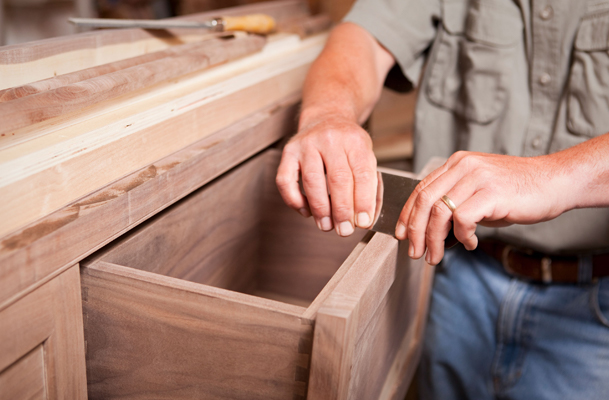 |
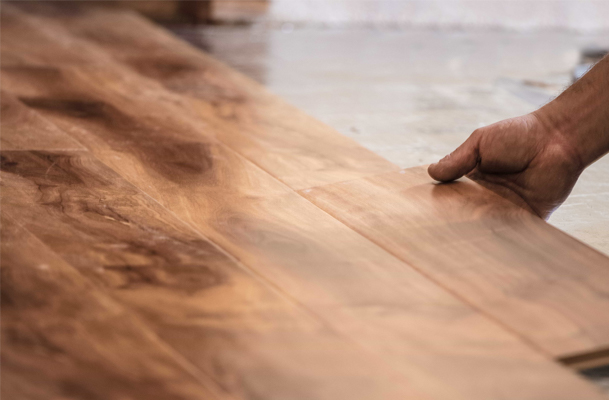 |
Birch plywood is widely used in both residential and commercial cabinetry, especially Baltic Birch, due to its clean edges, void-free core, and reliable durability.
Common cabinetry applications:
Kitchen and bathroom cabinets
Drawer boxes
Shelving
Cabinet carcasses and faces
Its resistance to delamination and high screw-holding power make it particularly suitable for frameless (Euro-style) cabinet construction.
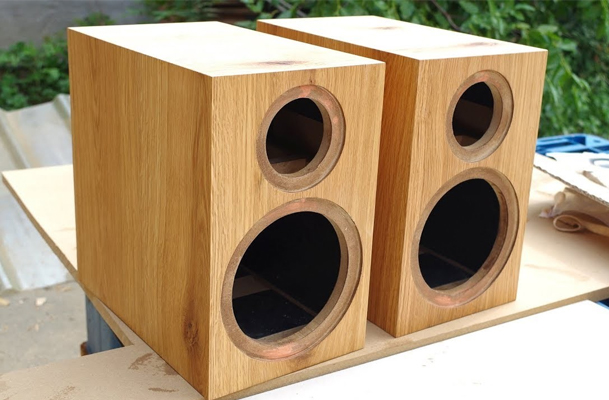 |
 |
In the construction sector, birch plywood is valued for its structural integrity and load-bearing capacity. Although it’s more expensive than softwood plywood, it’s often used when performance or finish is a priority.
Typical uses:
Subflooring and underlayment
Roof and wall sheathing (when strength is critical)
Stair risers and treads
Concrete formwork (using film-faced birch plywood)
Note: For exterior or high-moisture applications, ensure the plywood is rated for outdoor use (e.g., Baltic Birch with waterproof glue).
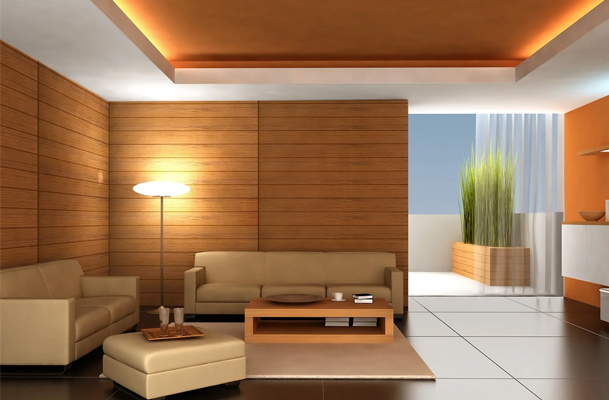 |
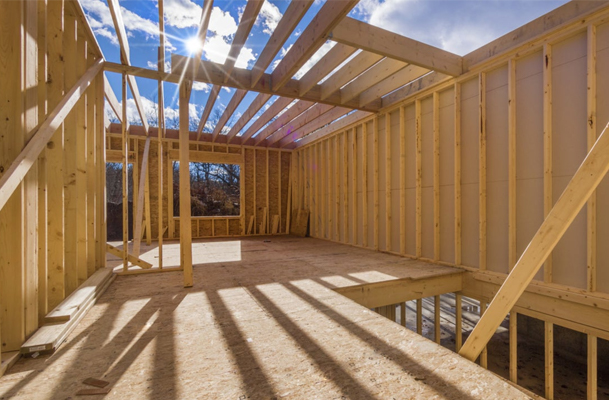 |
Designers often choose birch plywood for its minimalist, Scandinavian-style aesthetic. The smooth, uniform surface is ideal for custom finishes, paint, or veneer overlays.
Common decorative uses:
Wall paneling and partitions
Ceiling panels
Built-in shelves and alcoves
Custom wall art and CNC cutouts
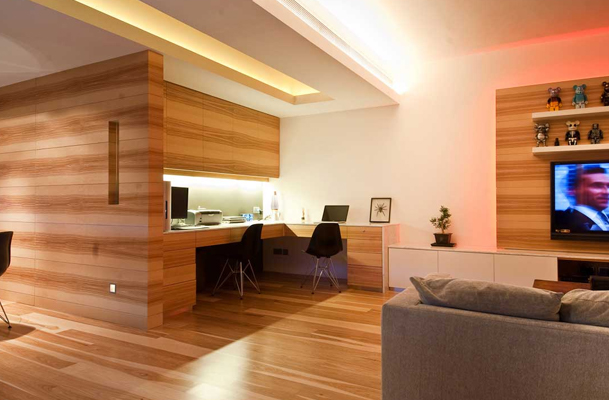 |
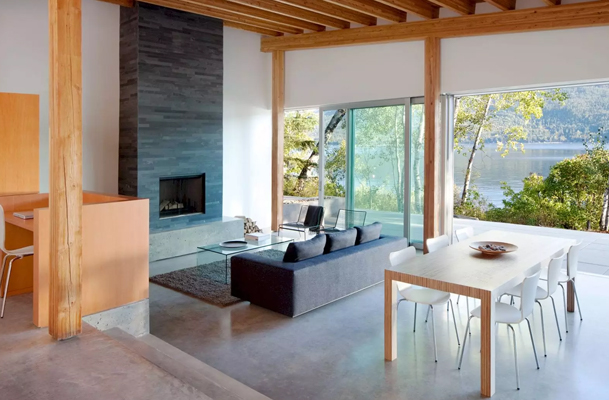 |
Birch plywood is a go-to material for makers, hobbyists, and DIY enthusiasts due to its accessibility and easy handling.
Popular DIY uses:
Storage boxes and organizers
Workbenches and shop furniture
Kids’ toys and play furniture
Speaker cabinets and audio enclosures
Its ability to take screws, glue, and finishes well makes it ideal for both beginner and advanced woodworking projects.
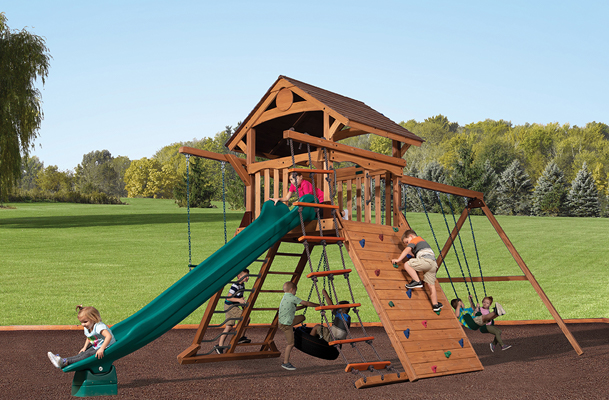 |
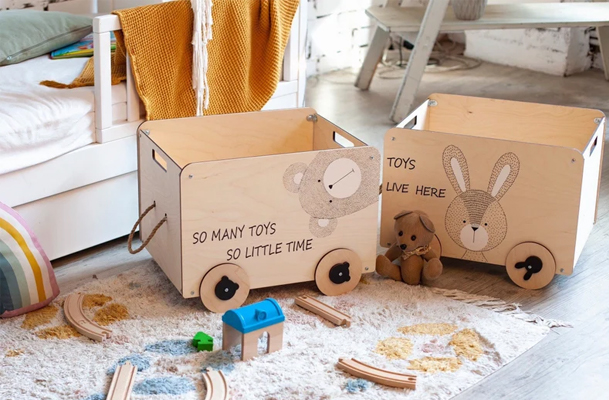 |
Birch plywood is a joy to work with for both professionals and hobbyists. Its uniform density, stable structure, and smooth surface allow for clean machining, secure joinery, and beautiful finishes. However, to get professional-grade results, it’s important to follow best practices at every stage—cutting, sanding, gluing, fastening, sealing, and finishing.
Here are the key techniques to get the most out of your birch plywood:
Cutting and Shaping
Birch plywood cuts cleanly, but its multiple layers can splinter along the edges if not handled properly.
Tips:
Use a sharp, high-tooth-count blade (such as an 80T plywood or fine crosscut blade)
Cut with the good face down when using a circular saw, or good face up with a table saw
Apply painter’s tape along the cut line to reduce tear-out
Consider using a scoring blade or a shallow first pass to minimize splintering
Sanding and Finishing
Birch plywood sands to a very smooth surface, ideal for painting or staining.
Tips:
Start with 120-grit sandpaper and finish with 180–220 grit for a smooth finish
Always sand along the grain direction of the outer veneer
Use a wood conditioner before staining to avoid blotchiness, especially on face veneers
For a natural look, apply a clear water-based polyurethane or lacquer
Finishing tip: Birch tends to absorb stain unevenly. If you want a colored finish, consider using a gel stain or tinted lacquer for better control.
Gluing and Fastening
Birch plywood bonds well with most woodworking adhesives and mechanical fasteners.
Tips:
Use PVA (wood) glue for most joints—ensure surfaces are clean and dust-free
Clamping pressure should be even but not excessive, to avoid glue squeeze-out and panel distortion
For screwing, pre-drill pilot holes to prevent splitting, especially near edges
Use cabinet screws or confirmat screws for strong, secure joints
Sealing and Painting
When used in high-moisture or visible environments, birch plywood benefits from a quality seal or paint job.
Tips:
Seal edges with wood filler or edge banding to prevent moisture absorption and roughness
Use a sanding sealer before paint or topcoat for better adhesion and smoother finish
Apply multiple light coats of paint or varnish instead of one heavy coat
For painted finishes, a high-build primer can help mask the grain and reduce surface imperfections
When choosing plywood for your project, it’s important to understand how birch plywood stacks up against other popular plywood types like pine, poplar, and MDF. Each has unique characteristics that affect strength, appearance, workability, and cost.
|
Feature |
Birch Plywood |
Pine Plywood |
|
Strength |
Higher density, stronger and more stable |
Softer wood, less dense, prone to dents and warping |
|
Appearance |
Light, fine grain; smooth and uniform |
More rustic with visible knots and grain patterns |
|
Workability |
Machines well; holds screws securely |
Easy to cut but can splinter easily |
|
Cost |
Generally more expensive |
More affordable and widely available |
|
Common Uses |
Furniture, cabinetry, decorative projects |
Construction, sheathing, rough carpentry |
|
Feature |
Birch Plywood |
Poplar Plywood |
|
Strength |
Denser and stronger |
Softer, less durable |
|
Appearance |
Pale with consistent grain |
Yellowish-green hues; uneven grain |
|
Workability |
Excellent for fine finishes |
Good, but can be blotchy when stained |
|
Cost |
More expensive |
Usually less costly |
|
Common Uses |
Fine furniture and cabinetry |
Paint-grade projects, furniture frames |
|
Feature |
Birch Plywood |
MDF |
|
Strength |
Stronger, more impact resistant |
Denser but brittle, prone to damage from moisture |
|
Appearance |
Natural wood grain and texture |
Smooth, uniform surface, no grain |
|
Workability |
Holds screws well, sands smoothly |
Easy to machine but edges can crumble |
|
Cost |
Typically higher price |
Generally cheaper |
|
Common Uses |
Visible furniture parts, cabinetry |
Painted cabinets, molding, speaker boxes |
|
Pros |
Cons |
|
High strength and dimensional stability |
More expensive than many other plywoods |
|
Attractive, uniform appearance |
Moisture sensitivity (varies by grade) |
|
Holds screws and glue well |
Requires quality finishing to prevent blotching |
|
Minimal voids and consistent layers |
Heavier than softwood plywood |
|
Eco-friendly options available |
Limited thickness options in some markets |
Proper maintenance ensures that birch plywood surfaces—whether in furniture, cabinetry, or interior finishes—retain their strength and visual appeal over time. While birch is durable, it does require regular attention to prevent issues like warping, surface damage, or moisture intrusion.
Here’s how to keep your birch plywood projects looking and performing their best:
Routine Cleaning:
Use a soft, damp cloth to wipe down surfaces. Avoid soaking the plywood or using harsh chemicals, which can damage the finish or delaminate layers.
Avoid Abrasives:
Use non-abrasive cleaners or mild soap solutions. Abrasive pads can scratch the veneer or remove protective coatings.
Use Protective Pads:
On furniture like tables and desks, add felt pads, coasters, or protective mats to prevent scratches, dents, and moisture rings.
Seal Exposed Edges:
Unsealed edges are vulnerable to moisture absorption. Apply edge banding, clear sealers, or paint to all exposed edges.
Control Humidity:
Maintain indoor humidity between 40–60% to minimize swelling or shrinking. Avoid placing birch plywood products near heat vents or windows.
Protect from Water Exposure:
Avoid direct contact with standing water. For bathroom or kitchen use, apply moisture-resistant finishes or use exterior-grade birch plywood.
Handle with Care During Moves:
When moving plywood furniture or panels, lift rather than drag to prevent surface gouging or veneer peeling.
Over time, birch plywood surfaces may show signs of wear, especially in high-traffic areas. Refinishing can breathe new life into your project.
Steps for light refinishing:
Lightly sand with 220-grit sandpaper.
Wipe off dust with a tack cloth.
Apply a fresh coat of polyurethane, lacquer, or a wood finish of choice.
Tip: Always test the finish on a small, hidden area first to ensure desired results.
Copyright © Tianma Lvjian Group Co., Ltd. Rights Reserved.
Wholesale Construction Plywood Manufacturers